An Innovative Sensor for Cable Joint Monitoring and Partial Discharge Localization
Abstract
:1. Introduction
2. Partial Discharges Monitoring and Sensor Adaption
2.1. Induced Current by a Partial Discharge
2.2. Localization of a Partial Discharge
2.3. FEM Simulation on an Actual Joint
- A metallic core in which the two cables are clipped together;
- A semiconductor tape, to ensure uniformity of the field around the cable (εr = 2.8, σ = 3 × 10−4 S/m) [24];
- Two dielectric materials, one with high permittivity (εr = 15, σ = 3 × 10−12 S/m) and the other with low permittivity (εr = 3, σ = 5 × 10−15 S/m).
3. Experimental Setup
4. Experimental Results
4.1. Partial Discharge Detection
4.2. Partial Discharge Location
5. Conclusions
Author Contributions
Funding
Acknowledgments
Conflicts of Interest
References
- Anwar, R.; Pudjiantoro, B.; Bahroinuddin, M. INTRO RLA A Methodology for Assessing the Remaining Life of Major Electrical Equipment to Extend the Service Life beyond the Design in PHE ONWJ. In Proceedings of the IEEE 4th Conference on Power Engineering and Renewable Energy, Solo, Indonesia, 29–21 October 2018; pp. 1–9. [Google Scholar] [CrossRef]
- Zaeni, A.; Khayam, U.; Viviantoro, D. Methods for Remaining Life Prediction of Power Cable based on Partial Discharge and Cable Failure History Data. In Proceedings of the 2019 International Conference on Electrical Engineering and Informatics (ICEEI), Bandung, Indonesia, 9–10 July 2019; pp. 662–665. [Google Scholar]
- Faifer, M.; Khalil, M.; Laurano, C.; Leone, G.; Toscani, S. Outage data analysis and RAMS evaluation of the Italian overhead transmission lines. In Proceedings of the 2016 IEEE International Energy Conference (ENERGYCON), Leuven, Belgium, 4–8 April 2016; pp. 1–6. [Google Scholar] [CrossRef]
- Benato, R.; Napolitano, D. Overall Cost Comparison Between Cable and Overhead Lines Including the Costs for Repair After Random Failures. IEEE Trans. Power Deliv. 2012, 27, 1213–1222. [Google Scholar] [CrossRef]
- David, E.; Parpal, L.J.; Crine, J. Influence of mechanical strain and stress on the electrical performance of XLPE cable insulation. In Proceedings of the 1994 IEEE International Symposium on Electrical Insulation, Pittsburgh, PA, USA, 5–8 June 1994; pp. 170–173. [Google Scholar] [CrossRef]
- Afia, R.S.A.; Mustafa, E.; Tamus, Z.A. Mechanical Stresses on Polymer Insulating Materials. In Proceedings of the 2018 Electrical Conference on Diagnostics in Electrical Engineering (Diagnostika), Pilsen, Czech Republic, 4–7 September 2018; pp. 1–4. [Google Scholar]
- Fabiani, D.; Montanari, G.C.; Laurent, C.; Teyssedre, G.; Morshuis PH, F.; Bodega, R.; Dissado, L.A. HVDC Cable Design and Space Charge Accumulation. Part 3: Effect of Temperature Gradient. IEEE Electr. Insul. Mag. 2008, 24, 5–14. [Google Scholar] [CrossRef]
- Zhang, Z.P.; Zheng, C.J.; Zheng, M.; Zhao, H.; Zhao, J.K.; Sun, W.F.; Chen, J.Q. Interface Damages of Electrical Insulation in Factory Joints of High Voltage Submarine Cables. Energies 2020, 13, 3892. [Google Scholar] [CrossRef]
- Zhang, Y.; Huang, F.; Hui, B.; Hou, S.; Fu, M.; Xu, Y. Partial Discharge Behavior of 110 kV Silicone Rubber Premoulded Cable Joint Induced by Pre-Expanding Installation and Temperature. In Proceedings of the 2018 Condition Monitoring and Diagnosis (CMD), Perth, WA, Australia, 23–26 September 2018; pp. 1–4. [Google Scholar] [CrossRef]
- Yang, F.; Liu, K.; Cheng, P.; Wang, S.; Wang, X.; Gao, B.; Fang, Y.; Xia, R.; Ullah, I. The Coupling Fields Characteristics of Cable Joints and Application in the Evaluation of Crimping Process Defects. Energies 2016, 9, 932. [Google Scholar] [CrossRef] [Green Version]
- Lowczowski, K.; Lorenc, J.; Tomczewski, A.; Nadolny, Z.; Zawodniak, J. Monitoring of MV Cable Screens, Cable Joints and Earthing Systems Using Cable Screen Current Measurements. Energies 2020, 13, 3438. [Google Scholar] [CrossRef]
- Steennis, F.; Wagenaars, P.; van der Wielen, P.; Wouters, P.; Li, Y.; Broersma, T.; Harmsen, D.; Bleeker, P. Guarding MV cables on-line: With travelling wave based temperature monitoring, fault location, PD location and PD related remaining life aspects. IEEE Trans. Dielectr. Electr. Insul. 2016, 23, 1562–1569. [Google Scholar] [CrossRef] [Green Version]
- Peretto, L.; Foddai, L.; Orrù, S.; Puddu, L. New MV Cable Accessory with Embedded Sensor to Check Partial Discharge Activity. In Proceedings of the 23rd conference on Electricity Distribution (Cired), Lyon, France, 15–18 June 2015. [Google Scholar]
- Mingotti, A.; Ghaderi, A.; Mazzanti, G.; Peretto, L.; Tinarelli, R.; Valtorta, G.; Amoroso, G.; Danesi, S. Low-Cost Monitoring Unit for MV Cable Joints Diagnostics. In Proceedings of the 2018 IEEE 9th International Workshop on Applied Measurements for Power Systems (AMPS), Bologna, Italy, 26–28 September 2018; pp. 1–5. [Google Scholar] [CrossRef]
- Testa, L.; Cavallini, A.; Montanari, G.C.; Makovoz, A. On-line partial discharges monitoring of high voltage XLPE / fluid-filled transition joints. In Proceedings of the Electrical Insulation Conference, Annapolis, MD, USA, 5–8 June 2011. [Google Scholar]
- Xianbo, M.; Xiaoguang, H. Design of on-line temperature monitoring system for power cable joints based on supercapacitor. In Proceedings of the 10th IEEE International Conference on Industrial Informatics, Beijing, China, 25–27 July 2012. [Google Scholar]
- Dong, X.; Yuan, Y.; Gao, Z.; Zhou, C.; Wallace, P.; Alkali, B.; Sheng, B.; Zhou, H. Analysis of cable failure modes and cable joint failure detection via sheath circulating current. In Proceedings of the Electrical Insulation Conference, Philadelphia, PA, USA, 8–11 June 2014. [Google Scholar]
- Jongen, R.; Gulski, E.; Smit, J. Failures of medium voltage cable joints in relation to the ambient temperature. In Proceedings of the 20th International conference and Exhibition on Electricity Distribution, Prague, Czech Republic, 8–11 June 2009. [Google Scholar]
- Christou, S.; Lewin, P.L.; Pilgrim, J.A.; Swingler, S.G.; Geoprghiou, G.E.; Makrides, G.; Stavrou, A.; Evagorou, D. Setup and preliminary results of an online thermal condition monitoring system for MV cable joints. In Proceedings of the 18th Mediterranean Electrotechnical Conference (MELECON), Lemesos, Cyprus, 18–20 April 2016; pp. 1–4. [Google Scholar] [CrossRef]
- Khan, U.F.; Lazaridis, P.I.; Mohamed, H.; Albarracín, R.; Zaharis, Z.D.; Atkinson, R.C.; Tachtatzis, C.; Glover, I.A. An Efficient Algorithm for Partial Discharge Localization in High-Voltage Systems Using Received Signal Strength. Sensors 2018, 18, 4000. [Google Scholar] [CrossRef] [PubMed] [Green Version]
- Azadifar, M.; Karami, H.; Wang, Z.; Rubinstein, M.; Rachidi, F.; Karami, H.; Ghasemi, A.; Gharehpetian, G.B. Partial Discharge Localization Using Electromagnetic Time Reversal: A Performance Analysis. IEEE Access 2020, 8, 147507–147515. [Google Scholar] [CrossRef]
- Mas’ud, A.A.; Ardila-Rey, J.A.; Albarracín, R.; Muhammad-Sukki, F.; Bani, N.A. Comparison of the Performance of Artificial Neural Networks and Fuzzy Logic for Recognizing Different Partial Discharge Sources. Energies 2017, 10, 1060. [Google Scholar] [CrossRef] [Green Version]
- Villa, A.; Barbieri, L.; Malgesini, R. Precise partial discharge localization in axisymmetric geometries. IEEE Trans. Dielectr. Electr. Insul. 2020, 27, 606–612. [Google Scholar] [CrossRef]
- Scotch Electrical Semiconducting Tape 13. Available online: https://multimedia.3m.com/mws/media/41134O/scotch-electrical-semi-conducting-tape-13.pdf (accessed on 15 May 2021).
- International Electrotechnical Commission. High-Voltage Test Techniques—Partial Discharge Measurements; IEC 62070:2000+AMD1:2015; IEC: Geneva, Switzerland, 2015. [Google Scholar]
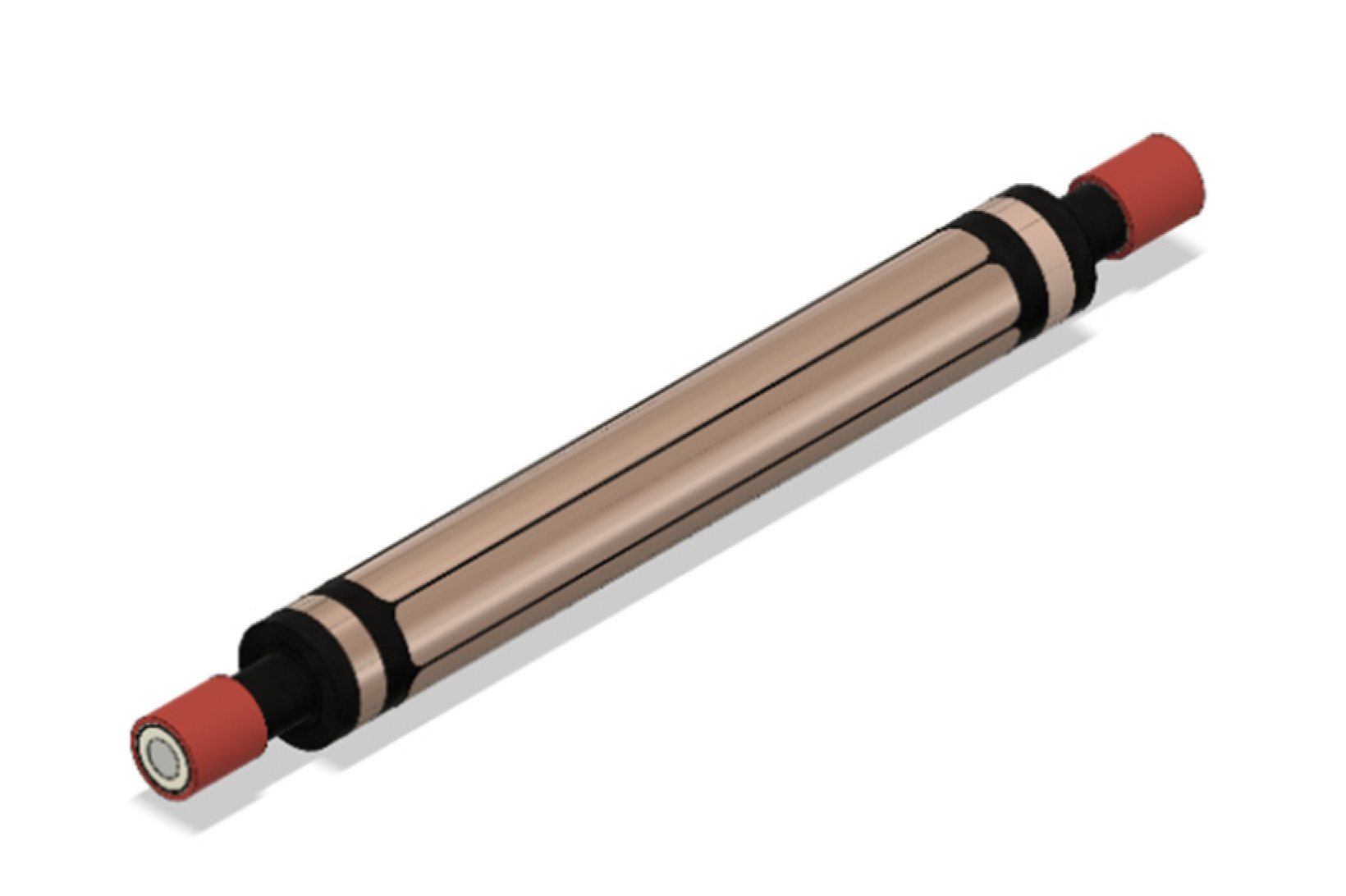
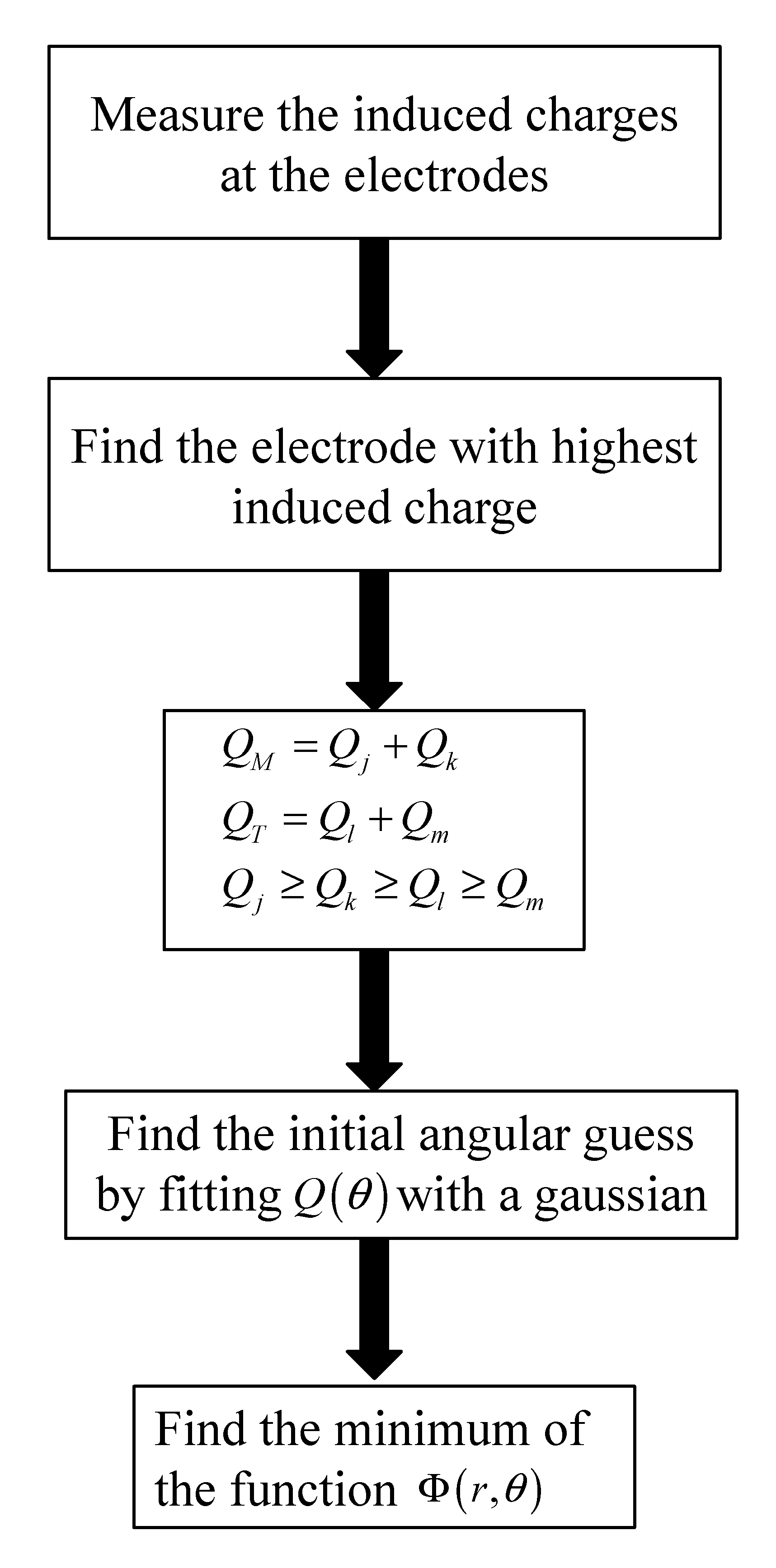

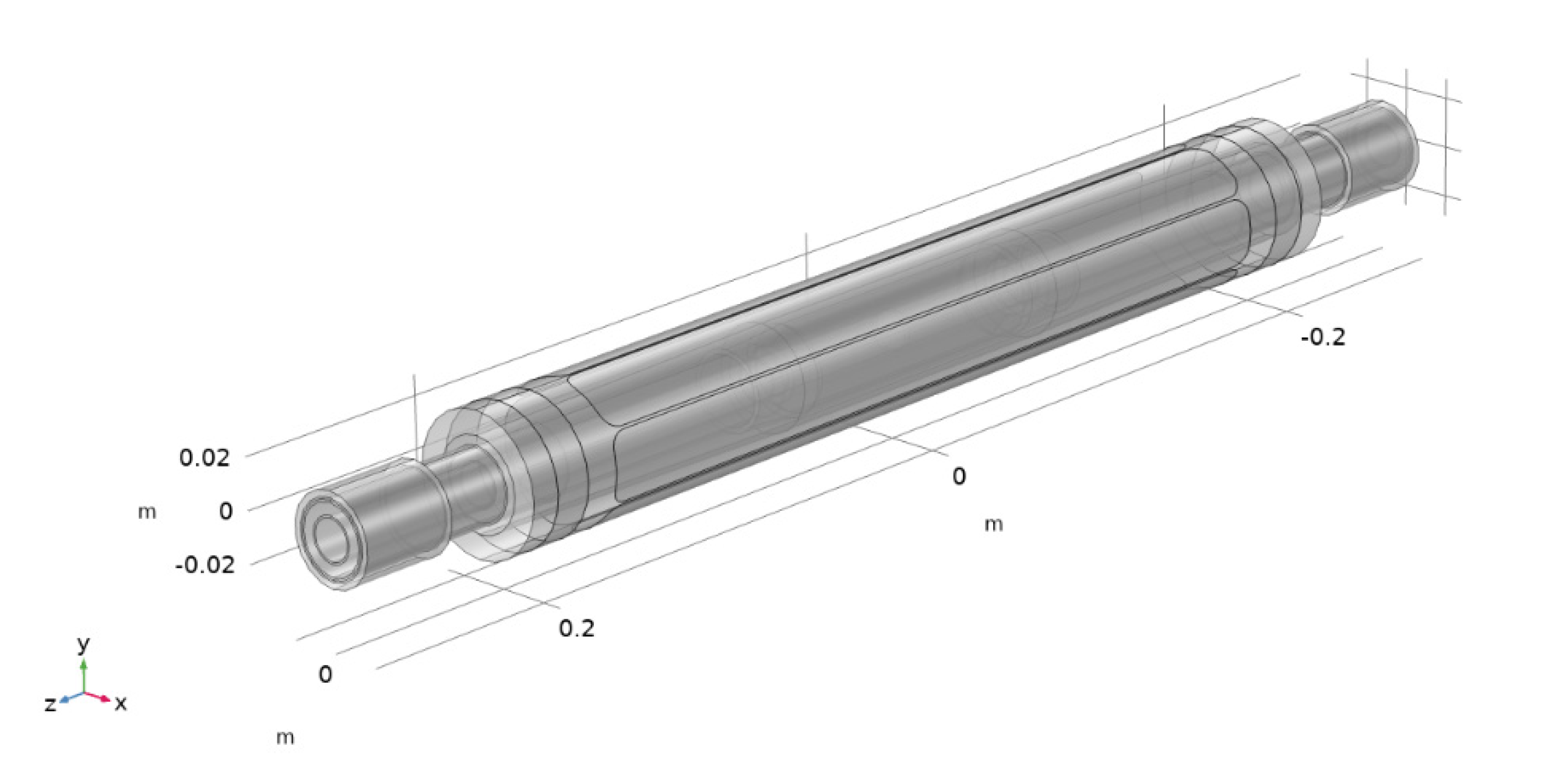
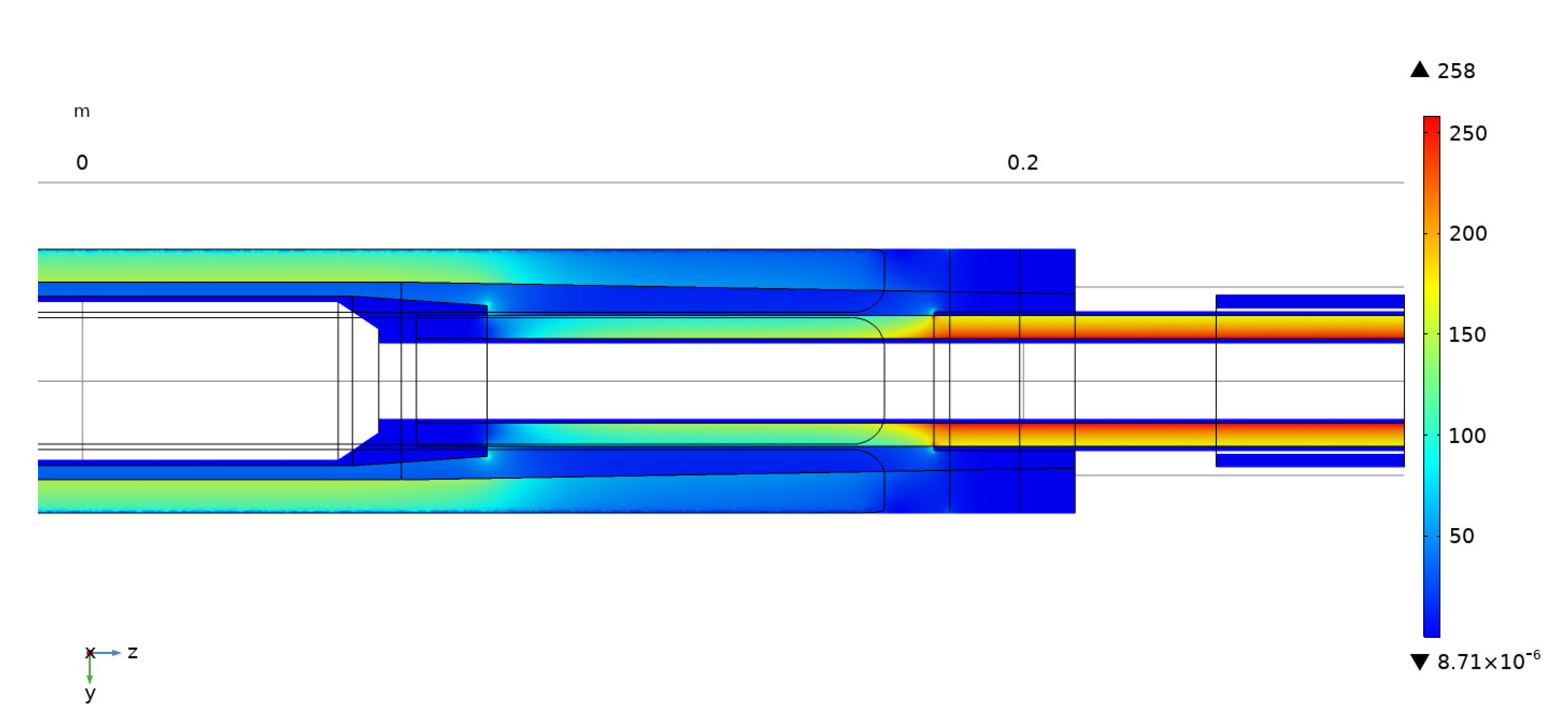



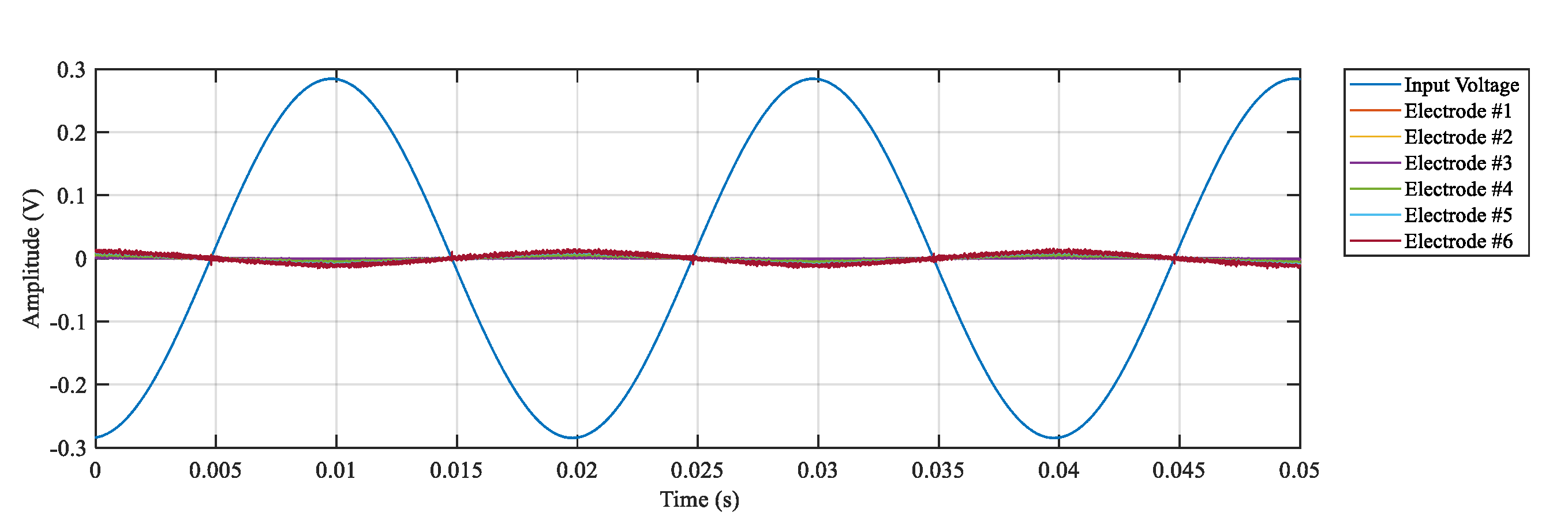





Publisher’s Note: MDPI stays neutral with regard to jurisdictional claims in published maps and institutional affiliations. |
© 2021 by the authors. Licensee MDPI, Basel, Switzerland. This article is an open access article distributed under the terms and conditions of the Creative Commons Attribution (CC BY) license (https://creativecommons.org/licenses/by/4.0/).
Share and Cite
Barbieri, L.; Villa, A.; Malgesini, R.; Palladini, D.; Laurano, C. An Innovative Sensor for Cable Joint Monitoring and Partial Discharge Localization. Energies 2021, 14, 4095. https://doi.org/10.3390/en14144095
Barbieri L, Villa A, Malgesini R, Palladini D, Laurano C. An Innovative Sensor for Cable Joint Monitoring and Partial Discharge Localization. Energies. 2021; 14(14):4095. https://doi.org/10.3390/en14144095
Chicago/Turabian StyleBarbieri, Luca, Andrea Villa, Roberto Malgesini, Daniele Palladini, and Christian Laurano. 2021. "An Innovative Sensor for Cable Joint Monitoring and Partial Discharge Localization" Energies 14, no. 14: 4095. https://doi.org/10.3390/en14144095
APA StyleBarbieri, L., Villa, A., Malgesini, R., Palladini, D., & Laurano, C. (2021). An Innovative Sensor for Cable Joint Monitoring and Partial Discharge Localization. Energies, 14(14), 4095. https://doi.org/10.3390/en14144095






